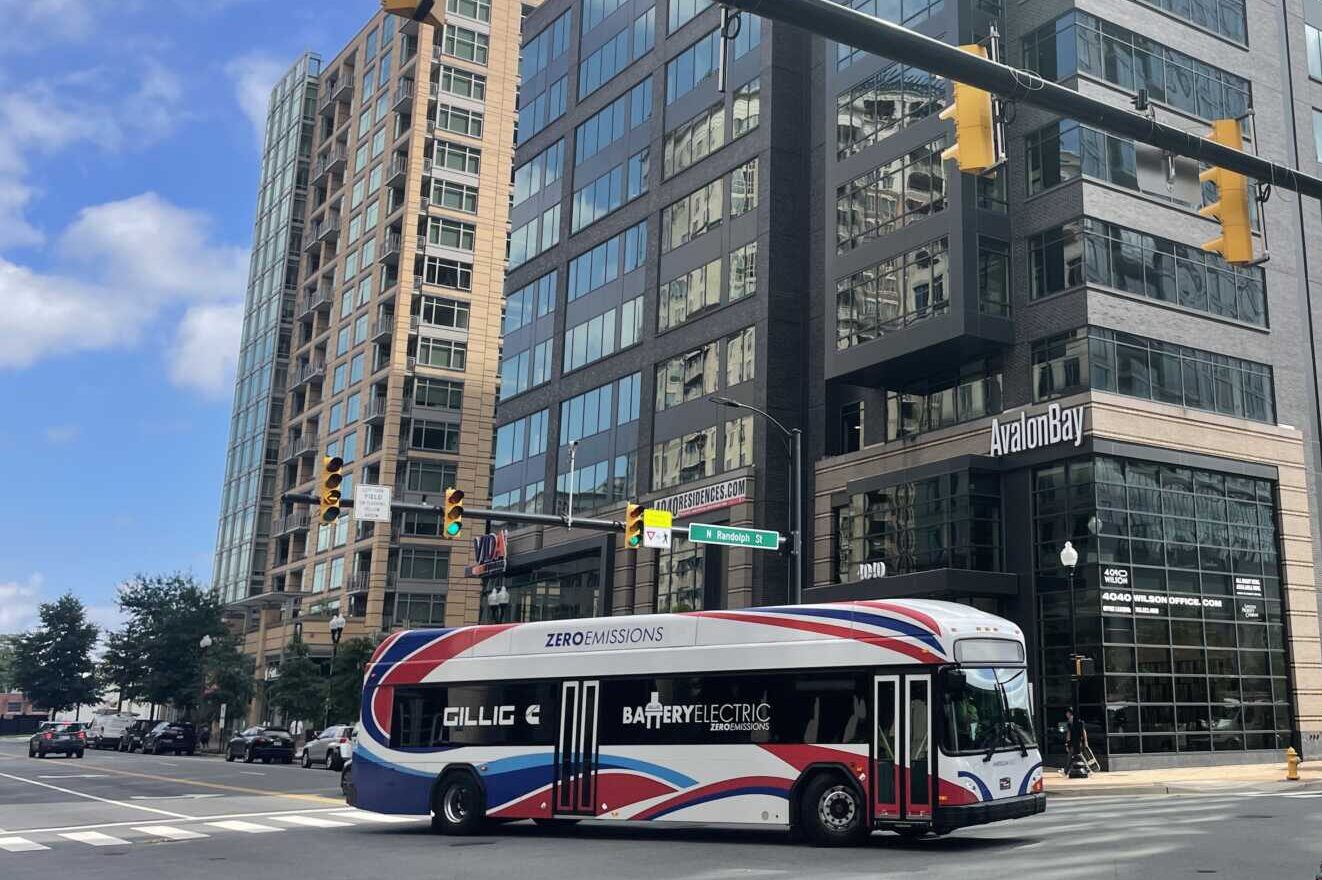
(Updated at 9:30 a.m. on 8/23/23) Arlington County’s efforts to electrify transit just jolted forward.
Arlington’s transit system, ART, is getting its first batch of battery electric buses, or BEB, as it pursues carbon neutrality by 2050, according to a press release. The vehicles will be deployed in late 2024 after work wraps up on the new Operations and Maintenance Facility on Shirlington Road.
With $3.3 million in state and $1.2 million in local funds, the county is buying four American-made buses by the company Gillig, which drivers and riders tested out along with other options over the last year.
“Delivering transit service is at the core of who we are and what we do, when it comes to realizing our vision of smart growth that is environmentally conscious and sustainable,” Arlington County Board Chair Christian Dorsey said in a statement.
Transit Bureau Chief Lynn Rivers said in a statement that this purchase is the county’s second step toward a “greener, healthier future for Arlington Transit.”
“The first step began with our public vehicle demonstrations of BEB technology,” she said. “The partnership with Gillig points us in the right direction for a reliable and resilient zero-emission transit fleet that contributes to a cleaner, healthier County.”
The release says the battery electric buses are part of an effort to test out new technologies while maintaining current reliable levels of service.
Arlington’s Transit Bureau could also be testing out advances in fuel technology for 15 buses it is buying to replace aging vehicles within ART’s 78-bus fleet.
Unlike the four electric buses, these 15 will be powered by compressed natural gas — essentially compressed methane — like the rest of the ART fleet. While compressed natural gas produces fewer emissions than petrol, is still considered nonrenewable because underground reservoirs make up its largest source.
For the 15 new buses, the transit bureau is looking at using renewable natural gas, or methane that has already been used or captured from landfill emissions, Dept. of Environmental Services spokeswoman Claudia Pors told ARLnow.
Meanwhile, the county is outfitting its forthcoming bus operations and maintenance facility with electric charging capabilities.
Initially, the county aimed to get electric buses operating from the facility in 2025, but the 2024 deployment date means it is ahead of schedule.
“The facility is projected to reach substantial completion in 2024 — a little faster than initially expected, and we are expecting to receive revisions of the 100% design for BEB infrastructure in the fall of this year,” Pors said.
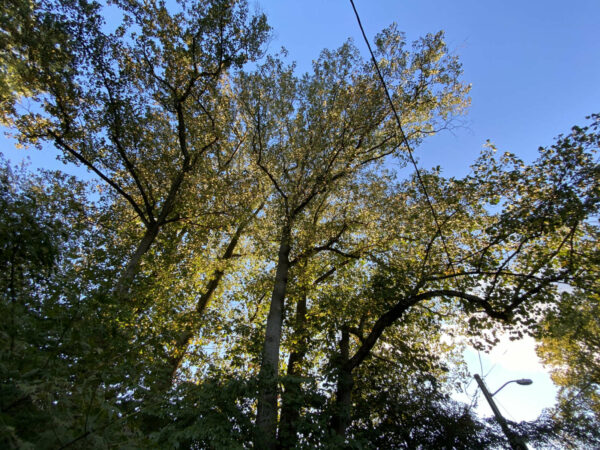
EcoAction Arlington just got a $60,000 boost from the Arlington branch of the NAACP and the Mormon church in its efforts to plant trees in disadvantaged neighborhoods.
Last year, the environmental advocacy group announced its plan to plant trees in 10 neighborhoods where the canopy is thinner than elsewhere — areas generally less wealthy and more diverse than Arlington’s leafier enclaves. The 2022 announcement coincided with a $50,000 donation from Amazon.
The initiative, dubbed the Tree Canopy Equity program, aims to raise $1.5 million to fund planting 250 trees twice a year, for the next five years — or 2,500 trees total. Last week, the NAACP announced it had selected EcoAction Arlington to receive the money through a strategic grant and partnership with The Church of Jesus Christ of Latter-day Saints.
“Arlington has a 10-year life expectancy difference amongst its neighborhoods, and this donation will create focus and provide much-needed tree canopy in places that have, for decades, been left out of the conversation,” NAACP Branch President Michael Hemminger said in a statement. “For years, EcoAction Arlington has been a committed partner in the furtherance of our mission, making them a natural fit for why we selected this non-profit as the recipient.”
To date, EcoAction Arlington has raised $239,000 from individuals, corporations, nonprofits, foundations and the state of Virginia, executive director Elenor Hodges tells ARLnow.
“That’s got to be a record for us in most money raised in shortest amount of time,” she said. “We’re truly grateful to the NAACP and looking to them as a true partner.”
The money funds outreach needed to find residents, apartment buildings and organizations interested in planting trees. It also pays for shrubs — trees are paid for through the Arlington County Tree Canopy Fund — and, in some cases, water.
Hodges says she is excited to use support from a foundation to pay community members to do the outreach work, similar to a model used in Wards 7 and 8 in D.C.
“This community work takes people, time and money, so we want to pay people and professionalize it,” she said.
This spring, volunteers planted 215 trees and 110 shrubs across the 10 neighborhoods, particularly in Penrose, Green Valley and Aurora Highlands, she said. Shrubs provide the benefits of trees and are ideal for people without the space for a tree or who are not ready to add one to their yard.
The 10 neighborhoods being targeted have a lower average tree canopy than Arlington County as a whole, according to one study funded by some members of local environmental advocacy groups, including EcoAction Arlington.
Based on imaging from 2021, a consultant found that trees cover 33% of land — excluding the Pentagon and Reagan National Airport — down from 41% on the same land six years ago. The 10 neighborhoods, meanwhile, have a canopy coverage average of 22.6%.
The neighborhoods and their canopy levels are as follows:
- Arlington View, 17%
- Aurora Highlands, 22%
- Buckingham, 21%
- Columbia Heights, 28%
- Glebewood, 29%
- Green Valley, 24%
- John M. Langston Citizens Association, 19%
- Long Branch Creek, 24%
- Penrose, 23%
- Radnor/Fort Myer Heights, 19%
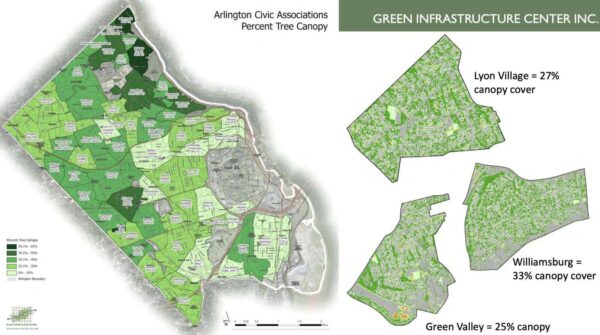
The absence of trees makes a neighborhood hotter and Arlington’s hottest places are along the Rosslyn-Ballston corridor and near Reagan National Airport, per a study by Marymount University.
Study authors say this is because concrete and asphalt absorb heat and radiate it back into the environment while neighborhoods in North Arlington have more trees and gardens to soak up that sunshine.
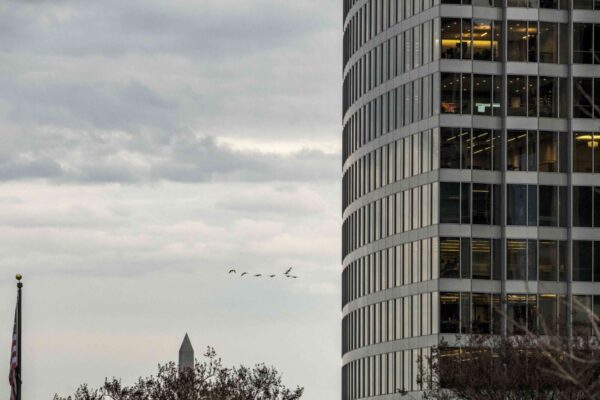
The following in-depth local reporting was supported by the ARLnow Press Club. Join to support local journalism and to get an early look at what we’re planning to cover each day.
When a member of Arlington County’s climate change committee took the dais earlier this month, she told the Planning Commission that she had good and bad news.
After evaluating the environmental commitments from JBG Smith for its Americana Hotel redevelopment project, the Climate Change, Energy and Environment Commission (C2E2) gave the project a score of 64.
“Sixty-four is a terrible score but it’s one of the best scores we’ve given,” member Cindy Lewin said.
She commended JBG Smith for participating in national and local programs incentivizing sustainable projects, and, at her request, meeting with a coalition focused on decarbonizing buildings. But, she emphasized, the building will still use significant fossil fuels.
“Arlington County is not going to be able to meet its commitments to climate change, to carbon neutrality and to its [Community Energy Plan] and sustainability goals if we continue to approve so much development,” she said.
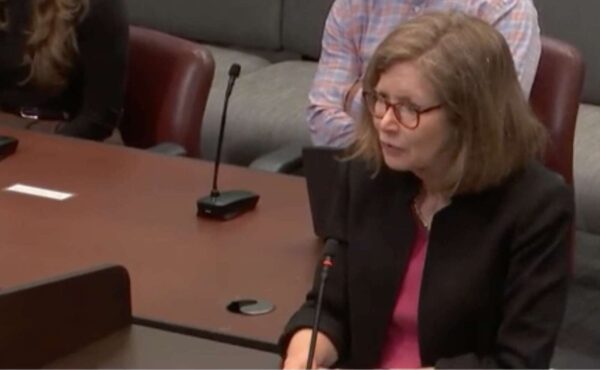
Arlington County, which has long been recognized nationally for its commitments to environmental sustainability, is trying to move away from fossil fuels. The burning of such fuels releases carbon into the atmosphere and contributes to a warming planet and other climate changes.
Since resolving in 2019 to neutralize its carbon emissions by 2050, Arlington County has already reached an important milestone toward that goal and knocked out other goals along the way.
In January — two years ahead of schedule — all county operations moved to renewable electricity, mostly because it is buying electricity from a new Dominion solar farm in rural Virginia. Arlington hired a first-ever Climate Policy Officer, purchased electric school buses and published the first edition of a quarterly publication showcasing its climate progress.
“Arlington, in general, is performing very well,” says Arlington County Board Takis Karantonis. “With what we set out to accomplish, we are at a nice level of completion.”
He says going forward, gains will be harder to achieve.
“We will have to electrify transportation and convince people not to drive so much,” he said. “We will have to make sure that new buildings are built at far higher standards than they were before.”
ARLnow spoke with leaders of a half-dozen environmental advocacy groups and every one of them commended the county — but said it is moving slowly and disjointedly toward electrifying everything from county buses to private development projects to single-family homes.
If it moved faster, they say, the county would live up to its reputation and show organizations and individuals these lifestyle and business changes are not only possible but necessary.
“What the scientific community is saying is that we have to cut carbon emissions by 50% by 2030 if we are to avoid going past what we need to to keep temperature rises at a manageable level,” C2E2 Chair Joan McIntyre said. “This is a critical thing we have to move quickly on and there’s a sense that that urgency is not seen in how the county is moving forward.”
These leaders hope the long-awaited climate czar, Climate Policy Officer Carl “Bill” Eger, will have the authority to steer a “whole of county” approach to reaching carbon neutrality. Julie Rosenberg, who leads the Arlington branch of Faith Alliance for Climate Solutions, says she has “ridiculously high expectations” for Eger.
“My hope is that he has staff and brings enthusiasm to decision-making and expectations so that it doesn’t feel like they look up and their bosses are so focused on getting the job done today,” she says. “I was a bureaucrat. It’s hard to run the train and envision a new path ahead but we have to do it. We don’t have a choice.”
In a conversation with ARLnow, Eger said some siloing is inevitable in local government but many divisions of Arlington’s government are working to solve problems collaboratively. His vision for a “whole of county” approach goes beyond the headquarters at 2100 Clarendon Blvd.
“As we look to the future, we are looking at a ‘whole of community’ thinking,” he said. “The county is the trusted institution standing behind the foundation of the work, bringing up community foundations, neighborhood groups, institutions, nonprofits and universities, to bring together resources and creativity, ways of problem solving and embedded intelligence to work toward contributing to solving climate change.”
He says his first aim is to integrate climate into policy conversations the way the county evaluates equity in its major policy discussions so it remains top-of-mind for the government.
As work continues on a new Arlington Transit bus facility in Green Valley, Arlington is taking steps to make it work for electric buses.
Electrifying buses is part of the county’s goal to reach carbon neutrality by 2050. To reach that goal, it needs to buy battery-powered electric buses and have a place to charge them.
Construction is currently set to wrap up next fall on a new ART Operations and Maintenance Facility at 2629 Shirlington Road and the county aims to have electric buses on-site by 2025. Meanwhile, Arlington is testing out different buses to see which to add to its fleet, piloting buses from two providers last year and possibly testing some from up to two more manufacturers.
With work progressing on both these fronts in tandem, plans for the facility moved forward with partially baked designs for charging infrastructure. This has set the county up to need to amend its design and construction contracts associated with the $96.6 million project as it learns more about what it needs to build.
This weekend, the Arlington County Board is set to tack on almost $585,000 to an existing $4.5 million design contract with Stantec Architecture to fully flesh plans to add up to 46 charging stalls that can accommodate up to 63 buses.
“As [Battery Electric Bus] concept plans were developed, the County proceeded with the 60% design for BEB charging infrastructure,” Dept. of Environmental Services spokeswoman Alyson Jordan Tomaszewski said. “The design scope expanded as the 60% design progressed and as more details about the County BEB requirements were identified.”
Once these designs are 100% complete, the county will update its construction contract with Turner Construction, authorizing it to purchase and install the charging equipment needed for the initial BEB pilot program, per a county report.
“The 100% design will provide capacity to add additional charging cabinets and equipment when additional BEBs are purchased,” it says.
Right now, something of a placeholder contract says the contractor has up to nearly $11.9 million to spend on above-grade charging equipment.
“This includes the necessary switchgear, transformers, chargers, and associated equipment to charge an initial increment of electric buses,” per a 2022 report. “It also includes canopies and solar panel over the canopies.”
That sum is on top of the $66.4 million contract to build the facility and below-grade charging infrastructure. These plans were approved with the expectation that the county would be buying electric buses sometime this spring.
While operating electric buses from the facility seems to have long been the plan, some neighbors had advocated for more fully baked plans for charging capabilities when the project was being developed.
Instead, designs stayed vague “to accommodate future fleet electrification” but be flexible enough to incorporate future technology, per a 2021 community presentation.
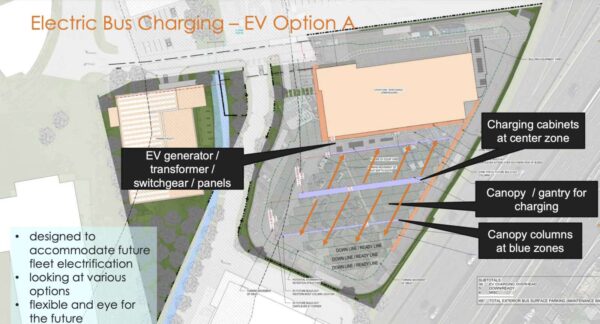
Construction on the facility continues apace and the county is still targeting a fall 2024 completion, Tomaszewski said.
“The erection of the steel structure on the Operations and Maintenance building was completed on March 17,” per the website. “In the next few weeks, crews will work on completing detailing of the steel, placing the metal deck, and completing the roof screening wall.”
Construction started last year, with a groundbreaking in June.
Buses are temporarily being stored on a property across the street from Washington-Liberty HIgh School, near a collection of homes. The county and some residents are embroiled in a lawsuit about whether the operations have impacted their quality of life.
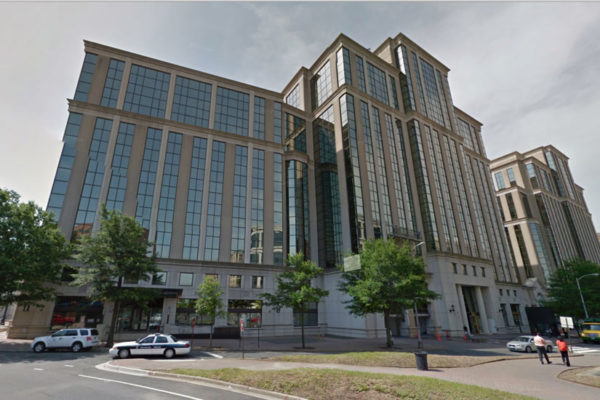
Arlington County operations now run entirely on renewable electricity — a full two years ahead of schedule.
As part of the Community Energy Plan adopted in 2019, Arlington County committed to transitioning 100% of county operations to renewable sources by 2025.
The county said in a press release sent out this morning (Thursday) that its buildings, streetlights and traffic signals, leased facilities and the Water Pollution Control Plant now run on electricity from sustainable sources.
This includes Dominion Energy Virginia’s Green Power program, solar panels and the Arlington-Amazon solar panel field in Pittsylvania County.
This last source up is in large part the reason Arlington met its goal two years early. The Arlington-Amazon solar panel farm in Pittsylvania County, which a Dominion Energy spokeswoman told ARLnow opened “late last year,” provides more than 80% of renewable electricity to Arlington facilities through offsets,
“We set an ambitious goal for net-zero County operations and facilities, as part of our overall Community Energy Plan for a fully carbon-neutral community, and we’ve met it – two years early,” County Board Member Katie Cristol said in a statement. “This exciting milestone is the result of cross-sector partnership, innovative approaches and Arlington’s commitment to doing our local part in addressing the global challenge of climate change.”
More from the press release:
Arlington County has committed to be carbon neutral by 2050 as part of its Community Energy Plan (CEP) by:
- Promoting buildings that are more energy efficient than is required by code.
- Enhancing Arlington’s approach to energy assurance and resiliency for critical services and harnessing the ability of nature to mitigate Arlington’s need for energy.
- Exploring alternative operational and financing mechanisms to support performance- and cost-effective renewable energy options.
- Maximizing the use of walking/biking, transit and use of shared vehicles, including micro-mobility devices, to promote a multimodal approach to transportation.
Arlington’s award-winning Community Energy Plan (CEP) is a long-term vision for transforming how the County generates, uses, and distributes energy. The CEP also aims to provide access to the benefits of clean energy sources for all residents regardless of economic situation.
Per the Community Energy Plan, the way Arlington intended to power all county operations with renewable electricity was through the purchase of power purchase agreements (PPAs). These can be either physical, through solar farms or more local solar panel installations, or virtual, via certificates.
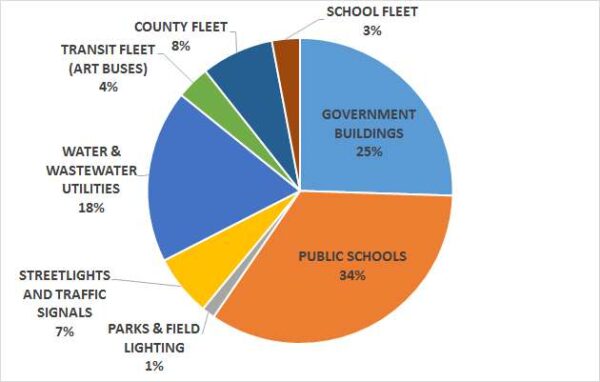
The next milestone in the CEP is powering 100% of Arlington’s electricity with renewable sources by 2035.
The ultimate goal is for the county to be completely carbon neutral by 2050, and the current efforts comprise just 11% of the greenhouse gas emissions reductions Arlington County says it needs to meet the ultimate goal of the Community Energy Plan.
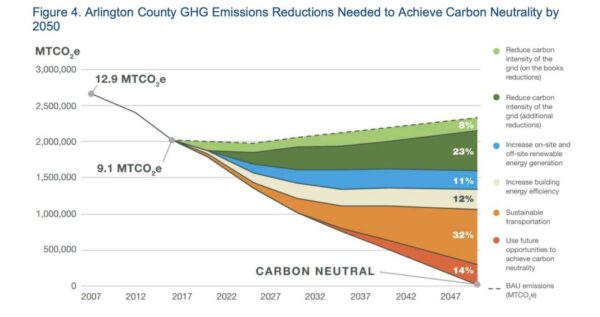
Arlington Public Schools — which contributed the most to Arlington County’s carbon footprint back in 2016 — continues to expand its solar capacity with new rooftop installations, says spokesman Frank Bellavia.
So far, three elementary schools — Alice W. Fleet, Discovery and Cardinal — are considered net-zero in terms of energy usage.
Solar power systems are being designed for Cardinal and Jefferson Middle School, and Bellavia says these should “host solar in the next year.”
“APS anticipates having over 3.4MW of solar capacity when these two schools’ solar arrays are operational,” he said.
Additionally, the school system is working on solar dashboards “so students and staff can use them as teaching and learning opportunities,” he said.
This school year, there are sustainability liaison positions at every school building, up from 10 participating schools when the program began in 2016.
“The Sustainability Liaison Program aims to support teachers at APS by providing a modest stipend in exchange for coordinating and designing sustainability activities that engage students and the APS community,” Bellavia said. “Given the success of the program in its first year, the program has expanded to 38 APS school facilities this year.”
Plans to redevelop a local YMCA may have too many apartment units and not enough community benefits, county planners say.
The YMCA is proposing to tear down its existing facility on N. Kirkwood Road in Virginia Square and build an 87,850-square-foot facility with indoor swimming pools, pickleball and tennis courts, a fitness space and a conference and lounge area, as well as 203 parking spaces. To finance the project, the nonprofit is building a separate 7-story, 374-unit apartment building.
County planners say the baseline for this project is around 270 units and that the YMCA it needs to provide more community benefits to build beyond that.
The reason for the 104-unit gulf is a disagreement over whether the gross floor area of the recreation facility should be excluded from the overall project area. This number determines, for instance, the size of a developer’s affordable housing contribution, either in cash or in on-site units.
The nonprofit’s attorney, David Tarter, says it is financially necessary to exclude the entire facility from density calculations and cites the “best in class” facility as a community benefit to be included in the benefits package.
“This full exclusion is necessary to provide the YMCA the resources needed to construct the proposed YMCA facility,” Tarter writes in the nonprofit’s site plan application.
On its website, the nonprofit says the new building “will serve an estimated 11,415 children, adults and seniors annually, creating 108 new permanent living wage positions and 175 construction jobs.”
Other benefits include three open spaces totaling about an acre and an east-west pedestrian and bicycle connection through the site.
County planner Michael Cullen says past precedent for site plans and ordinances support including the building’s square-footage in density calculations. He said in a presentation these extra 104 units “must be earned through a comprehensive community benefits package” that goes beyond earning LEED Gold certification in exchange for more units.
He says the nonprofit will also have to do more for affordable housing to obtain approval to build apartments in the first place. In the Washington Boulevard and Kirkwood Road Special GLUP Study governing the site, the land is zoned for commercial use.
The county developed the plan, with community input, to guide the YMCA development and two other projects on the same block.
That includes Terwilliger Place, which Arlington Partnership for Affordable Housing completed this September on the American Legion site, and a 270-unit apartment building dubbed Modera Kirkwood, on which Mill Creek Residential broke ground in December 2020. The latter could be completed next year.
Projects in this situation “have generally been expected to achieve greater achievements in accordance with the affordable housing master plan,” Cullen said.
Arlington Dept. of Community Housing, Planning and Development spokeswoman Erika Moore says the county is discussing with the applicant ways to offset the 104 units with more sustainability and affordable housing commitments. Potential approaches will be discussed at a Site Plan Review Committee meeting, a date for which has not yet been set.
The public review process has just kicked off for the project. An online feedback opportunity, which opened on Tuesday, will run through Monday, Dec. 19.
Salad shop Chopt plans to open its new Ballston location next month, touting the chain’s new “sustainable restaurant design.”
The Chopt at 4201 Wilson Blvd — in the Ballston Exchange complex, near Shake Shack — will open on a yet-to-be-announced date in June. It will feature “a more eco-friendly means of operating… the first of its kind for the brand, designed explicitly to have a reduced environmental impression,” according to a press release.
The eatery will also emphasize contactless ordering, much like its burger-oriented neighbor, with self-service kiosks and QR codes for ordering at the tables.
“At 1,912 sq ft, Ballston seats 16 guests total, 10 at the bar with views of the salad making station and 6 in a large booth,” said the release. “The storefront will be the first Chopt to go to complete contactless ordering with a variety of advanced ways to order its creative salads, wraps and warm bowls, including self-service kiosks and new QR code tableside ordering and delivery.”
Chopt will compete fellow salad chain Sweetgreen — located two blocks away, along Wilson Blvd — for the patronage of Ballston’s office and apartment dwellers.
In addition to a number of locations in the District, Chopt has existing locations in Rosslyn and McLean.
The full press release is below.
Chopt, the fast-casual salad pioneer, announces plans to expand its footprint in Virginia with a new sustainable restaurant design set to open in the Ballston Exchange at 4201 Wilson Blvd Suite 0185 this June. Opening dates to come.
Chopt’s goal has always been to find a more eco-friendly means of operating and the Ballston restaurant is the first of its kind for the brand, designed explicitly to have a reduced environmental impression. This store will have an energy efficient HVAC system, smaller spatial footprint, energy efficient kitchen wares, and streamlined operations to lower overall energy consumption, and potentially, GHG emissions.
“Sustainability is on everyone’s mind right now and it’s a focus for us as we build and design each new restaurant,” said Dennis Lee, VP of Development at Founders Table. “We’ve invested in shrinking our environmental footprint, and made an effort to quantify the energy savings associated with the new store model – we look forward to seeing how our work can continue to evolve.”
At 1,912 sq ft, Ballston seats 16 guests total, 10 at the bar with views of the salad making station and 6 in a large booth. The storefront will be the first Chopt to go to complete contactless ordering with a variety of advanced ways to order its creative salads, wraps and warm bowls, including self-service kiosks and new QR code tableside ordering and delivery. In addition to its classic and customer craft salad options, Chopt creates limited-edition “Destination Menus” and Ballston will open with Destination California.
“We eagerly anticipate this opening, to see how our customers respond to the new store design,” said Julie Atkinson, Chopt’s Chief Marketing Officer. “It’s important to play our part in improving our environmental impact and we’ll continue to make decisions with this in mind across all of our efforts.”
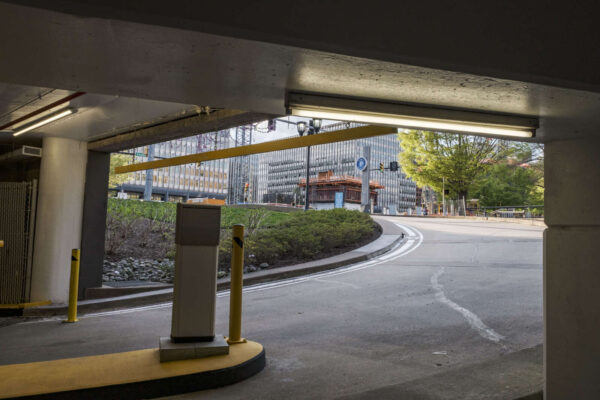
Jogger Robbed Near Rosslyn — “The victim was jogging in the area when the unknown male suspect approached, grabbed her by the arm and pushed her away while attempting to remove her cell phone from her hand. A brief struggle ensued, during which the suspect stole the victim’s cell phone before fleeing the scene in a white sedan. The victim sustained minor injuries and did not require the treatment of medics.” [ACPD]
JBG Announces Carbon Neutrality — “JBG Smith Properties, in its 2022 Environmental, Social and Governance report released Friday, said it achieved carbon neutrality across its 16.8 million-square-foot operating portfolio in 2021 as a result of its purchases of carbon offsets and renewable energy credits… More than 50% of the Bethesda-based firm’s holdings are located in Pentagon City, Crystal City and Potomac Yard, the area branded as National Landing.” [Washington Business Journal]
ACPD Motor Officer Is No. 1 — “Over the weekend, members of the Special Operations Section competed in the 2022 NOVA Motor Rodeo. Congratulations to all the participants including ACPD’s Corporal Maxwell who placed 1st in the Individual Slow Ride – Police Category!” [Twitter]
More Dangerous I-395 Driving — From public safety watcher Dave Statter: “This is a new one for #395cam: Driver gets halfway down Rt 110N ramp & decides that’s not where they want to to go. Watch what they do.” [Twitter]
It’s Tuesday — Possible light rain in the afternoon and evening. High of 66 and low of 57. Sunrise at 6:18 am and sunset at 7:57 pm. [Weather.gov]
Sponsored by Monday Properties and written by ARLnow, Startup Monday is a weekly column that profiles Arlington-based startups, founders, and other local technology news. Monday Properties is proudly featuring 1515 Wilson Blvd in Rosslyn.
Very good boys (and girls) can now eat food that’s good for the planet, from a Clarendon-based company called Chippin.
It all started when founder Haley Russell gave her goldendoodle a cricket to eat, and her dog enjoyed it.
“That initiated the journey of looking at how might we be able to give all-natural alternative protein sources to nourish four-legged family members and meet this totally unaddressed need, which is for pet parents to be able to give them great nutrition while aligning purchases the way they buy other things” — that is, with a focus on environmental impact, she tells ARLnow.
The company sells dog treats and dog food made from crickets, an invasive species of fish and a CO2-sucking algae called spirulina. Russell says Chippin enjoyed a successful 2021: it launched new products and hit the shelves of big-box pet supply store Petco, which aims to have sustainable food companies comprise half of the food brands it offers by 2025.
And this year, she’s focused on increasing distribution and finding new retail and wholesale partnerships. While Russell couldn’t divulge any more details, she said Chippin is looking to respond to the tremendous demand for cat food products later in 2022.
U.S. pets are the fifth-largest global meat consumers, according to Russell, so how pet owners choose to feed their companion animals has a significant impact on the environment. Production of traditional protein sources such as chicken, beef and pork releases methane and CO2 emissions, leads to water overconsumption and degrades water and air quality, among other consequences, she noted.

But when Russell began looking for alternatives, she says she found “nothing on the market that was delivering on what I wanted: a high-quality, eco-friendly, tasty product.”
Her dog’s eager consumption of a cricket was not the only source of inspiration for Chippin. Russell, a graduate of Northwestern University, says she studied economics and global health and has always been interested in how food could be “an agent for change for health and the environment.”
Her years in the Great Lakes region prompted her to see if silver carp — an invasive species threatening the $7 billion Great Lakes fishing economy — could become another source of food for dogs. Her hunch was right.
“We created the first-of-its-kind dog food that solves for providing high-quality nutrition with a protein for dogs with allergies to beef and chicken and helps restore biodiversity in the Great Lakes while fishing for a fish we need to fish for,” she said.
Every product is vetted by veterinarians and researchers at the University of Illinois, who ensure these “planet-friendly proteins” are healthy and biologically appropriate for dogs, she said. They’re also more digestible than chicken.
The Maryland native says Clarendon, where she also lives, is the paw-fect fit for Chippin, which is “seeking to be agents for change in taking climate action in an industry that has totally been under-addressed.”
“It’s dog-friendly neighborhood and my team really enjoys engaging with the vibrant community of pet parents here,” she said.
(Updated 4:40 p.m.) County commissioners welcome Amazon’s latest revisions to plans for the second phase of its HQ2 in Pentagon City — but are pushing for more greenery and accessibility.
Designs for Phase 2, also known as PenPlace, are wending through Arlington County’s planning review process.
Phase 2 will be anchored by a lush, futuristic building, dubbed “The Helix,” and feature three, 22-story office buildings, three retail pavilions, a childcare center, a permanent home for Arlington Community High School, 2.5 acres of public green space, multi-modal pathways and underground parking.
Amazon is massaging out the details with county staff, commissioners and community representatives to ready the plans for Planning Commission and County Board review, possibly in the spring. The tech giant has already updated the three office buildings, pathways and green spaces in response to requests for more architectural diversity and plantings.
“The team has been careful reviewing all comments and believe together, we are making PenPlace a better project for the entire community,” said Joe Chapman, Amazon’s Director of Global Real Estate and Facilities, during a meeting last night. “We are committed to the process and to the community.”
Project designers presented their changes during a Site Plan Review Committee meeting last night (Monday). County staff, commissioners and community members asked for better accessibility for people with disabilities, more pedestrian safety features, increased tree canopy and even more plants.
“In general, everyone really likes the presentation and appreciates the refinements to the design from the [Long Range Planning Committee] to now, and from the comments raised in the online period,” Planning Commission member Elizabeth Gearin said. “There’s very strong and widespread appreciation for changes to the design, for the early incorporation of sustainability, biophilia and art.”
Still, commissioners recommended leveling the entrances to underground parking garages so drivers have clearer views of pedestrians. They and county staff asked Amazon to revisit a set of stairs leading from Army-Navy Drive to an “elevated forest walk” on the northern end of the site.
“We’d really like to see the stairs removed and replaced with ramp that everyone can use equally,” Gearin said.
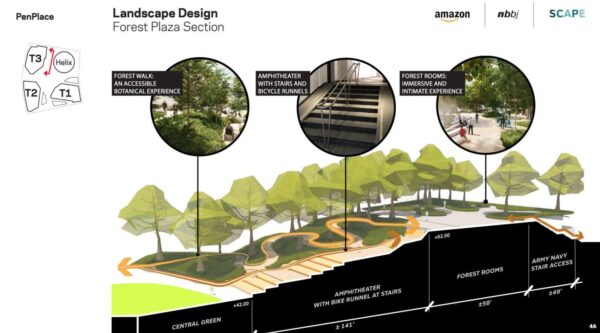
Those suggestions follow up on changes Amazon made this summer to the Army-Navy frontage, “to greatly improve what was seen as a foreboding frontage,” county planner Peter Schulz said.
Others called for more and taller trees throughout the site — not just in the “elevated forest.”
“Anything less than towering oak will look out of place next to 22-story buildings,” said Arlington Tree Action Group member Anne Bodine.
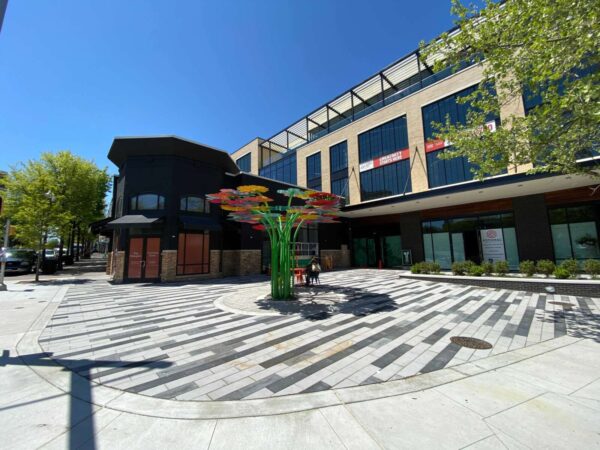
The Crossing Clarendon says it has “some ‘reel’ good news to share.”
The retail and residential development formerly known as Market Common Clarendon has netted Seamore’s, a New York-based sustainable seafood spot, announcing the new restaurant tenant on social media.
“Born from a love of sustainable and local fishing, Seamore’s brings the ocean back to the urban table with modern, healthy dishes for every eater,” the post said. “From lobster rolls, fish tacos, to their signature tuna poke, this is Clarendon’s best catch and you’ll only find it at The Crossing Clarendon.”
The restaurant is slated to operate in a 2,605-square foot spot at the corner of N. Edgewood Street and Clarendon Blvd — where the old Baja Fresh used to be — on the same strip as the MyEyeDr. and Nicecream. The building has since been renovated, along with the four-story office building behind it.
Regency Centers and Seamore’s were not immediately able to provide additional details about when the restaurant could open.
Seamore’s has a half-dozen locations around New York City, and was founded by a New Yorker seeking better options in Manhattan for local fish.
“For a city surrounded by water, New York shockingly lacks menus with local fish,” the restaurant’s website says. “Seamore’s was born to change this. Founded by native New Yorker, Michael Chernow, who longed for better fish tacos and a reunion of city and sea, Seamore’s brings the ocean back to the urban table in a deliciously modern and healthy way.”
The menu is always changing based on what’s available, according to the restaurant.
Seamore’s says it only sells fish with stable or growing populations that are harvested “in an environmentally conscious manner.”


